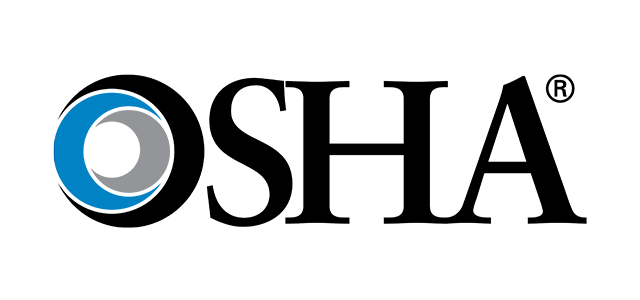News
OSHA cracks down on healthcare employers

The Occupational Safety and Health Administration announced Thursday that it would crack down on hospitals and nursing homes for workplace hazards that aren't protected by formal rules. Experts say politics have complicated efforts to formalize workplace regulations.
The workplace safety regulator said in a staff memo that inspections of hospitals and nursing homes should include potential hazards related to musculoskeletal disorders caused by patient handling, in addition to dangers from blood-borne pathogens, workplace violence, tuberculosis, and slips, trips and falls. Any violations would likely be cited with the general duty clause of the OSHA act. That allows the agency to penalize employers for failing to implement industry-recognized safeguards for which there are no official standards or rules.
This comes after OSHA announced it would finalize a rule this year requiring all employers report causes of occupational injuries and illnesses for review in a publicly available database. Currently, employers are required to keep internal paper records of injuries and illnesses, but that information isn't publicly available.
OSHA's focus on enforcing safe patient handling follows ergonomic standards that were established at the end of the Clinton administration but were thrown out by the second Bush administration before they could take effect. Since then, it's been deemed “politically impossible” to create a formal ergonomics rule, said Howard Mavity, chair of the workplace safety and catastrophe management practice group at Fisher & Phillips, a law firm in Atlanta.
“They're not going to try and that's probably a wise decision, Mavity said. “Still, OSHA remains absolutely determined to get ergonomic enforcement rolling.”
So, OSHA has provided the healthcare industry with a horde of resource materials to educate them on the dangers of lifting without the assistance of a patient handling device like a mobile or overhead lift. The healthcare industry has one of the worst rates of overexertion injuries among all U.S. industries, with 75 overexertion injuries for every 10,000 full-time hospital workers and 107 injuries for every 10,000 workers at a nursing or residential facility. Hospital rates are nearly twice the national average for all industries, and nursing homes are nearly three times as high.
Mavity believes OSHA has invested in industry campaigns, particularly on safe patient handling and workplace violence, to create an industry expectation that facilities must have procedures and equipment in place to prevent these issues. Given that sentiment, the agency can then prosecute lax organizations under the general duty clause.
Only 11 states regulate patient handling, and most require only that healthcare facilities develop policies for securing equipment, training staff and collecting injury data. A few require policies that work toward eliminating or restricting unassisted handling.
OSHA has cited healthcare employers in the past for ergonomic stressors, but in numbers that are uncharacteristically small for the agency. Between April 2012 and April 2015, regulators issued just 11 citations of the general duty clause for hazardous ergonomic conditions.
An OSHA official told NPR on Thursday that a typical penalty would likely be $7,000 per hospital, but could be as high as $70,000 if they could prove administrators deliberately ignored the problem. But Mavity doubts the agency will be strict in the initial stages of enforcement.
“It's not clear how aggressively they're going to be able to initially do this because they don't have the manpower,” Mavity said.
The American Nurses Association, which has pushed for hospitals to eliminate unassisted patient handling, applauded OSHA's enforcement memo. But Executive Director Debbie Dawson Hatmaker said in a statement that a formal rule still needs to be implemented.
"ANA is hopeful that OSHA's enforcement memo will encourage hospitals to proactively address safe patient handling and mobility and create comprehensive programs to protect patients, nurses and other health care workers," Hatmaker said. "While OSHA's action is a step in the right direction, ANA believes a federal ergonomic standard is necessary to protect health care workers and is working with Congress to introduce legislation that would establish such a standard."
Bonnie Castillo, director of National Nurses United's Registered Nurse Response Network, commended OSHA's increased focus. She said the union hopes the federal government will put formal, specific rules in place, like patient handling legislation the NNU has sponsored in California.
"We definitely welcome OSHA's increased concern and commitment to enforcing stricter monitoring," Castillo said. "It still remains to be seen how they're going to unroll that, but we know that these issues have been the forefront of our mission as registered nurses to enforce the highest standards in order to prevent injury."
Greg Crist, senior VP at the American Healthcare Association, which represents nursing homes, said in a statement that the AHCA "encourages all its members to follow guidelines and best practices recommended by OSHA.”
Modern Healthcare has reached out to the American Hospital Association for comment.
Healthcare employers shouldn't feel rushed to over-purchase patient handling equipment out of fear of an impending OSHA inspection, Mavity said, especially because it seems as though OSHA isn't recommending specific equipment that hospitals must use. But healthcare organizations need to evaluate what risks exist in their work environment so that it's clear that they've taken an initiative to protect their employees.
“It's time to start obtaining your own professional ergonomist and engaging in your own evaluations and determining exactly what is required,” he said.
Mavity said the agency's additional focus on workplace violence makes sense given recent marketing from the agency. States have recentlyconsidered bills to protect healthcare workers from violence and OSHA last year fined Brookdale University Hospital and Medical Center for dozens of incidents in which patients and visitors assaulted employees.
Source: http://www.modernhealthcare.com/article/20150625/NEWS/150629922